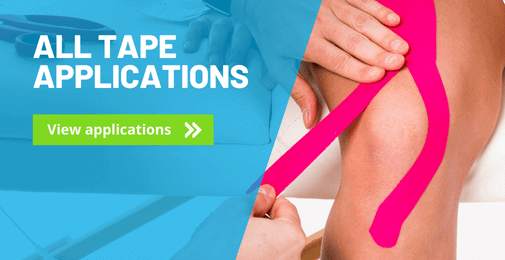Are you dealing with a recent ankle injury like a sprain? Using lymphatic tape can be highly effective in such cases. This special tape helps increase blood flow and reduces swelling and pain in the injured tissue. It’s recommended to apply lymph tape during the initial days following the injury to aid in the healing process. Additionally, it’s crucial to have the injury assessed by a healthcare professional to determine if there’s any damage to the ankle or related structures.
Get started with these items to tape your ankle
-
CureTape® Sports Extra Sticky Kinesiology Tape
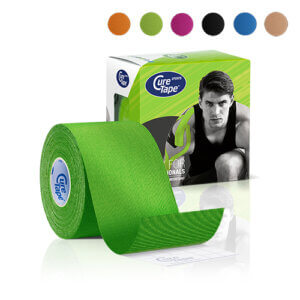 $21.95
In stockSelect options This product has multiple variants. The options may be chosen on the product page
$21.95
In stockSelect options This product has multiple variants. The options may be chosen on the product page -
MYCureTape® – 3 Rolls Kinesiology Tape – Value Pack
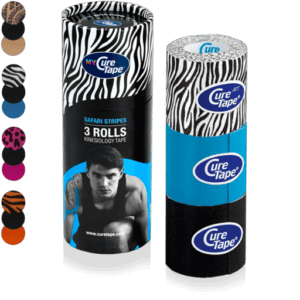 $26.95
In stockSelect options This product has multiple variants. The options may be chosen on the product page
$26.95
In stockSelect options This product has multiple variants. The options may be chosen on the product page -
CureTape® Pre-Tape Spray
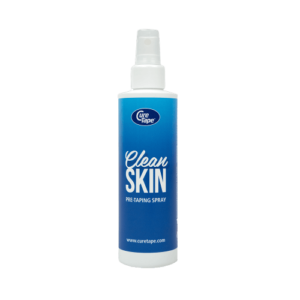 $21.95
In stockAdd to cart
$21.95
In stockAdd to cart -
Standard scissors
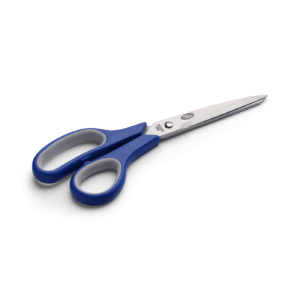 $14.95
In stockAdd to cart
$14.95
In stockAdd to cart

Christina’s advice when taping your ankle
When you’re taping your foot, it’s crucial to use a kinesiology tape that sticks securely. Feet can get sweaty, and with all the movement, there’s a lot of friction. That’s why I recommend using CureTape Sports. This type of tape is specially designed to be extra sticky, 30% more than regular CureTape, ensuring that your tape stays in place for longer!
How to tape your ankle
Tips for Effective Ankle Taping:
- Make sure you understand what’s causing the pain or discomfort
- Check if there are any reasons why taping might not be a good idea.
- Before you start, read the instructions carefully.
- Choose a tape colour or print that suits your style!
- Round of all the edges to prevent peeling.
- Avoid stretching the tape at the beginning and end.
- Rub the tape firmly for better adhesion; warmth helps activate the adhesive.
- You can shower or swim with the tape on; just pat it dry gently afterward, avoiding vigorous rubbing.
- To remove the tape easily, use body or massage oil.
Preparation for taping your ankle
Tape
Shape: Lymph Tape
Number of strips: 2
Technique: Drainage technique (without stretching).
Measuring and cutting the tape
Step 1:
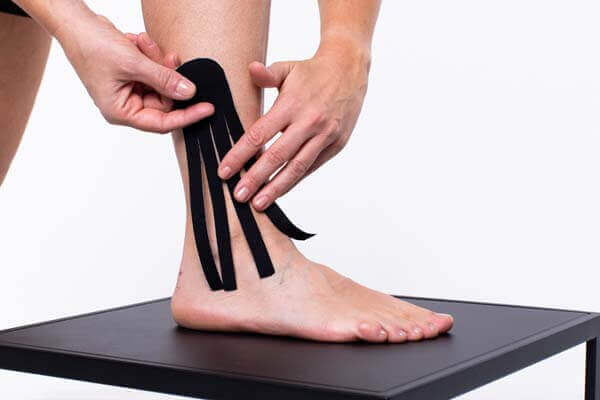
- Measure the length of tape you need. Start from a hand width above the ankle to the edge of the foot.
- Cut the two tapes three times through to the base. Keep approx. 5 cm as a base. This creates an “octopus shape”.
Applying the tape
Step 1:
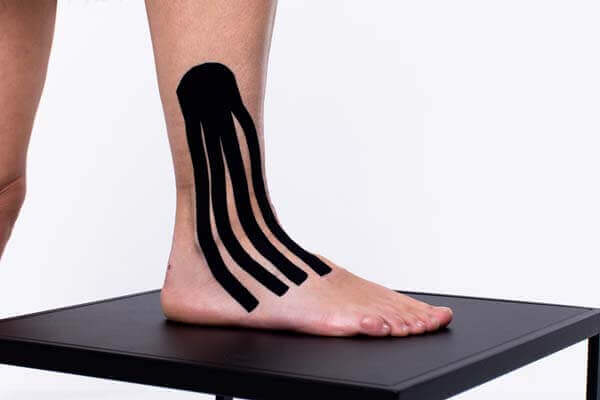
Step 2:
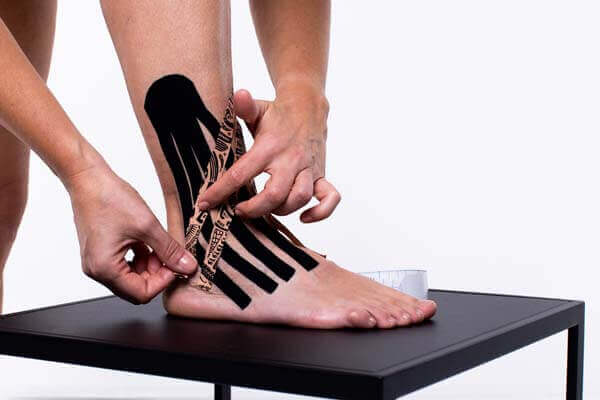
Step 3:
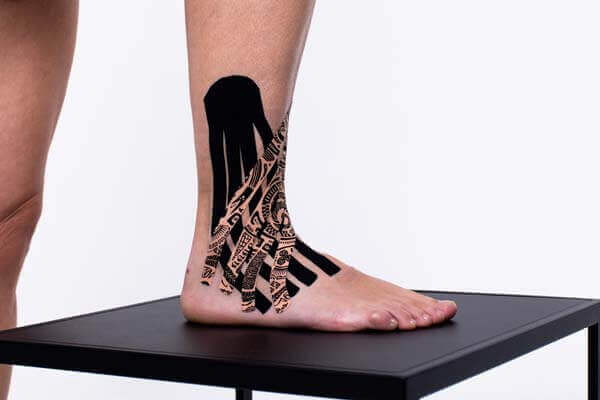
- Tear the release paper at the transition from base to strips and remove the section below the base.
- Apply the base slightly diagonally.
- Carefully remove the release paper from the tape up to the last centimetre and apply the individual strips with a space of approx. 1 cm, carefully without stretching, to the skin over the thickened area.
- Repeat this instruction in the opposite direction with the second tape. The applied tapes cross each other like a grid in the area of the largest swelling.
- Finally, gently rub the tapes together to activate the adhesive.
Learn how to tape
- 30 taping instructions for common injuries that taping can help you with
- 176 pages of clear written instructions
- 200 step-by-step instructions accompanied by photo’s, illustrations and scannable video’s through QR codes
What are you waiting for? Order your copy today!
*This book is intended for people who want to tape an injury or complaint themselves. If uncertain about the complaint, consult a physiotherapist.
THYSOL is the manufacturer of the kinesiology tape brand CureTape. As CureTape, we have been training and supplying professionals for almost 25 years. And consumers now know how to find us too! By manufacturing all our tapes in our own factory, we can guarantee the best quality!
Please note that the indicated tape applications and information on our website about the possibilities with kinesiology tape have not yet been scientifically proven. The statements and examples mentioned are based on long-term experiences of patients and trained therapists.
Contraindications not to tape: pregnancy, open wounds, broken bones, unexplained complaints, allergies and skin diseases, use of medication such as blood thinners, thrombosis and fever. Always apply tape in consultation with a specialist.



